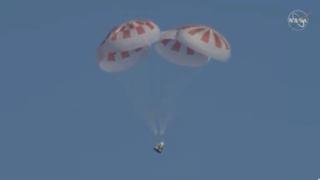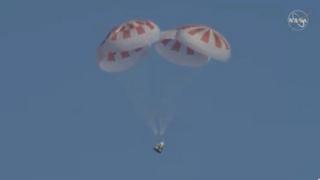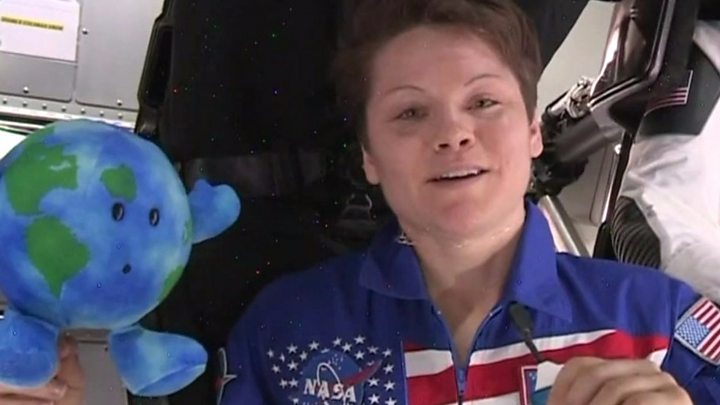SpaceX Dragon demo capsule returns to Earth

 Image copyright EPA
Image copyright EPA America’s new commercial astronaut capsule completed its demonstration flight on Friday with a splashdown in the Atlantic Ocean.
The SpaceX Dragon vehicle left the International Space Station (ISS) where it had been docked this past week and re-entered the Earth’s atmosphere.
It had a heat-shield to protect it from the high temperatures of re-entry.
Four parachutes brought it into soft contact with water about 450km from Cape Canaveral, Florida.
Splashdown occurred at about 08:45 EST (13:45 GMT). A boat, called GO Searcher, was waiting to recover the capsule.

Media playback is unsupported on your device
The mission – which had no humans aboard, only a dummy covered in sensors – went according to the script.
The Dragon will set the stage for the US space agency (Nasa) to approve the vehicle for crewed flights.
The first of these could occur as soon as July, although no-one should be surprised if this target date slips into the summer as engineers work through the post-flight analysis.
The Dragon’s owner, SpaceX chief executive Elon Musk, had previously expressed some anxiety about how the capsule would cope with re-entry, given that the vehicle’s backshell, or heatshield, has a somewhat irregular shape that could lead to a roll instability at hypersonic speeds.
Not since the shuttles has America been able to send its own astronauts into orbit. It’s had to rely instead on Russia and its Soyuz spacecraft, launching from Baikonur Cosmodrome in Kazakhstan.
Nasa hopes to bring this near-eight-year gap in capability to an end with the introduction of two new commercial transportation systems.
As well as SpaceX, the agency has seed-funded Boeing to produce a capsule of its own called the Starliner.
This vehicle is scheduled to have its uncrewed demonstration flight in April or soon after.
Ultimately, Nasa will be purchasing seats in both systems to take its astronauts to the ISS. But the commercial nature of the relationship means the companies will be free also to sell rides to secondary customers.
These will no doubt include the space agencies of other nations, but perhaps some private space companies and individuals too.
Nasa has already selected its first astronauts to fly aboard a crewed Dragon.
Bob Behnken and Doug Hurley have been busy training with the SpaceX team, learning all about the capsule’s operation and what to do if there is an emergency.
One problem that could occur is a failure of the Dragon’s carrier rocket during the ascent to orbit.
The demonstration capsule’s lift-off last Saturday was picture perfect, but some kind of booster anomaly can never be discounted.
In such a scenario, a Dragon’s powerful thrusters would push it away from the launcher to safety.
SpaceX will practise this very procedure shortly.
The team plans to take the current Dragon after its return and put it on another rocket and launch it out of the Kennedy Space Center. A minute into this flight, a deliberate abort will be commanded.
The timing is significant because it’s when the vehicle is experiencing maximum aerodynamic pressure.
If the Dragon can stably depart in such circumstances, it ought be able to handle an escape at any stage in a flight.
As with the present demo, no-one will be aboard for this hazardous test.
Jonathan.Amos-INTERNET@bbc.co.uk and follow me on Twitter: @BBCAmos


